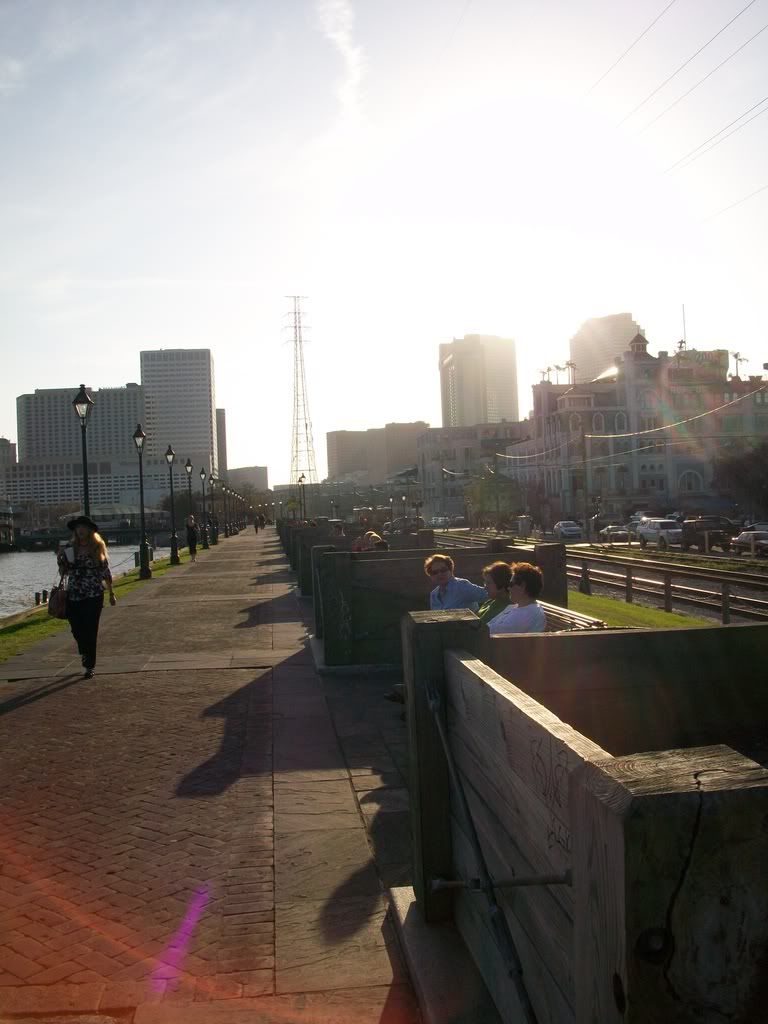An UrbanSTL forumer posted
the link to the St. Louis Economic Stimulus Package Proposal, which the city titled "St. Louis: "Fired Up and Ready to Go"".
[cue blank stare]
Among the many things I will discuss from this plan is the I-55/Tucker interchange overhaul, which the city is correct to have identified as a priority.
However, the city wants to reformulate the interchange
to leave more room for suburban big box stores!
Page 81 details the "Change We Need":
The former Darst Webbe high-rise public housing development has now been transformed into a mixed-income HOPE VI low-rise development; City Hospital, more than 30 years vacant and vandalized, has now been transformed into residential condominiums, most of which are now sold and occupied. Over the past 30 years, the adjacent neighborhoods of Lafayette Square, Soulard and LaSalle Park have been almost completely revitalized. The most significant missing piece linking all of these successful revitalization initiatives is quality mainstream retail development.
Hmm...okay. I'm listening. But take a look at the old rendering for the site (in the city's Bohemian Hill neighborhood) that the city uses to makes its case:

That site plan is "dependent upon ramp relocation"?
The lack of vision and lack of sense for urban design is flabbergasting. This area has been slowly destroyed with the vision of giving this interchange (Tucker, I-55, and I-44) over to big box retail. Built St. Louis
has documented what has already been demolished in the diminutive Bohemian Hill neighborhood. Why aren't these structures providing a model on how to rebuild?
Instead of suggesting that the bloated and utterly disruptive mass of interstate interchanges should be given over to
urban development, the plan argues that the extra space is needed so that front-facing surface parking can be in clear view and plentiful.
The author of this write up even has the nerve to argue that one of the benefits of the proposal--under a heading entitled
Green Features-- is that more people will be able to "walk and bicycle" to new services provided by the development. Sure, it is possible to walk across a giant parking lot, but it's not exactly "green" design.
The city will continue its long malaise if the absence of sound urban planning continues. The wonderfully urban neighborhood slowly nixed for this future development contains the code on how to rebuild--street grids, small scale, walkability, attractive architecture and design. Yet these lessons seem completely squandered.
It is extremely important to reduce the size, prominence, and convenience of interstates within the City of St. Louis. This interchange is a wonderful place to start the demonstration of how urban neighborhoods can be reclaimed from the clutches of deadening, autocentric planning. This proposal, however, will only damage the nearby neighborhoods. With nothing to distinguish it from suburban strip centers, except for, in all likelihood, higher rates of crime and vandalism, it will take the typical big box route of a 15-year life cycle before creeping blight sets in--perhaps on accelerated track.
I question the wisdom of encouraging big box retail in the City of St. Louis. While big box seems appropriate in less walkable areas of the city adjacent to interstates (Hampton and I-44, for instance), it is not appropriate here, or in many other spots in the City of St. Louis. Too many close-in suburbs (Richmond Heights, Maplewood, Brentwood, and South County) offer automobile-owners
a safe and parking-aplenty opportunity to shop in big boxes. It's hard for a more constrained urban site, which, as I've stated, usually grapples with worse crime and perception of crime issues than suburban locations, to compete effectively in the long term. The city should be bending over backwards not for big boxes to place an anti-urban store in city limits, but for small business owners to continue to lend a local flair and distinction from those very suburbs.
Big boxes do not belong in, or near, the Near South Side.
This land should be opened up to smaller scale retail, office, and residential development, with an urban street grid reinstated.




















































